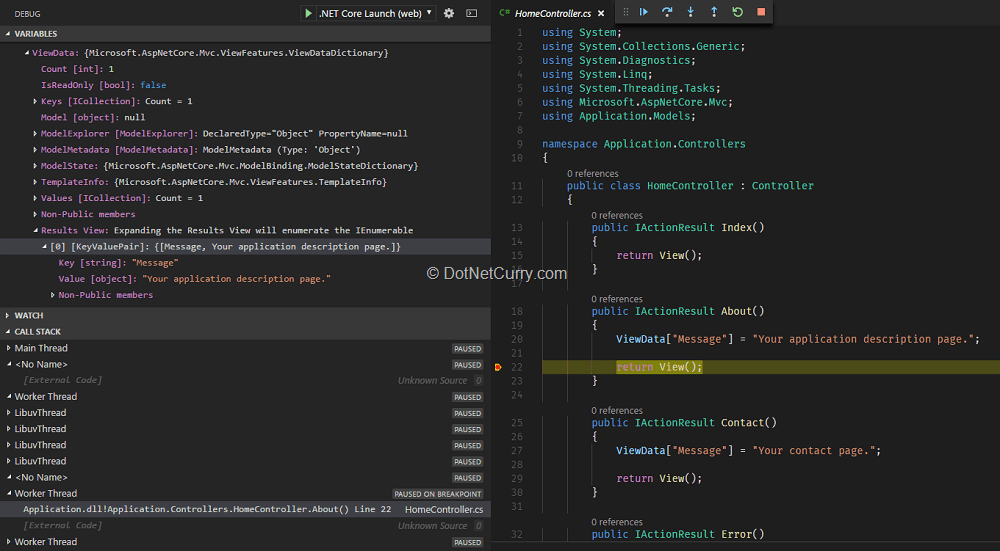

- Visual studio hotkeys open test explorer how to#
- Visual studio hotkeys open test explorer install#
- Visual studio hotkeys open test explorer code#
- Visual studio hotkeys open test explorer series#
Visual studio hotkeys open test explorer code#
This class has a large number of methods that allow us to express our expectations about the behavior of our units.Īdd the following line of code to the test method: In NUnit we use the Assert class to write our assertions. In case it proves to be false, we say the test has failed. If the affirmation turns out to be true, we say the test has passed. In the context of unit testing, an assertion is an affirmation about how a unit of your system should behave. It’s time for you to write your first assertion. Then, create a new void returning public method called MyFirstTestMethod and add the attribute to it. This is another naming convention I like to use: to name the test class after the production class, adding the word Test at the end.Īfter the class is created, add the NUnit.Framework namespace to its using declarations. Add a new class called EmployeeTest to the ApplicationTest project. I think the class is simple enough to not require additional explanation. The class’s name will be Employee and its code will look like this: First, let’s add a new class to our production project. The installation will be done in a few seconds. The process is the same, the only difference is the package’s name:ĭon’t forget to check if the right project is selected before pressing ENTER.

Visual studio hotkeys open test explorer install#
We need to install another package, the NUnit Test Adapter, which we’ll let us run NUnit tests in Visual Studio.

Then type or copy-paste the following command:ĭouble-check that you’ve got the right project selected, like in the image:Īnd then press ENTER. Go to: Tools > Nuget Package Manager > Package Manager Console. Fortunately, NUnit is available as a Nuget package, which makes its installation a breeze.įirst, open the Package Manager Console. So, the new project will be called ApplicationTest, and it’ll be of type Class Library as well.Īfter creating the project, I delete the default class, same as before. I usually create another project, which I name using the scheme Test. There are several different opinions regarding where should the test class be kept: along with production code, or in a different location.

Next step! Now we create the test project. In the context of unit testing, we use the term Production Code when we’re talking about the “real code” in our application, in contrast to the Test Code we also write. This project will store the production code in our solution. Now, let’s rename the default project to Application. You could rename it, of course, it makes no difference. Whenever I create a new solution on Visual Studio I delete the Class1 class that is created by default. Download the Community version here.Ĭreate a new solution of the Class Library type, with the name LearningUnitTesting. For this project I’m going to use Visual Studio 2017. Net world, such as MS Test, developed by Microsoft itself.įeel free to try other frameworks later on. There are other testing frameworks available in the. The framework we’re going to use is NUnit, based on JUnit, which is a test framework for the Java language. If you recall my previous article, you’ll remember that, in order to write and run unit tests, you need a unit testing framework. Together, we’re going to write some tests in order for you to know some of its features.
Visual studio hotkeys open test explorer how to#
I’ll show you how to install and use the a unit test framework called NUnit. Today you’re going to learn how to create unit tests. In the previous article you learned what unit tests are and what are the motivations for writing them. Today you’re going to write your first unit test.
Visual studio hotkeys open test explorer series#
Better late than later! Time to continue our series on unit testing for beginners.


 0 kommentar(er)
0 kommentar(er)
